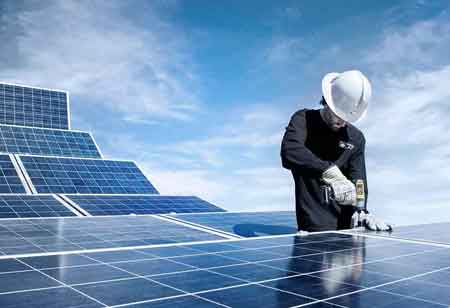Thank you for Subscribing to Energy Business Review Weekly Brief
Farm-to-Solar Gaining Importance for a More Conservative Energy Space
Agrivoltaics, or access to solar power, is soaring critically in rural areas on a global scale, especially with the support of farmers who lease out their land for utility-scale solar arrays.

By
Energy Business Review | Saturday, April 22, 2023
Stay ahead of the industry with exclusive feature stories on the top companies, expert insights and the latest news delivered straight to your inbox. Subscribe today.
The farm-to-energy practice has emerged as a crucial beneficiary and advanced approach in the energy consulting arena in Europe.
FREMONT, CA: Agrivoltaics, or access to solar power, is soaring critically in rural areas on a global scale, especially with the support of farmers who lease out their land for utility-scale solar arrays. The farm-to-solar trend is the co-location of agricultural production and solar energy generation on the same land and, thus, is often intertwined with regenerative farming practices. Wherein, the mindful cooperation between farming and energy often poses a serious challenge to the status quo, thereby fueling climate change, and is often faced with increasing opposition in the sectors. However, agrivoltaics assist in neutralising the critics and in breaking down barriers to the solar development space.
For instance, leasing out land for a utility-scale solar array provides farmers with an indispensable source of steady revenue and is a critical lifeline for individual farmers and often for entire businesses. For instance, solar leasing can be credited with helping to sustain the cranberry industry in Europe. Generally, rural communities hold enhanced opportunities to strengthen and diversify their local economies via embracement and active engagement in the ongoing renewable energy transition.
As a result, the renewable energy capacity around the globe is anticipated to double and also potentially outgrow by a factor with the enactment of new policies to capitalise on continuous cost declines in the wind and solar spaces. Hence, in recent times, Europe has been aiming to bring more solar energy into rural communities with a private focus on improving their solar access, especially for underserved low- and middle-income communities.
Farmlands in Europe are attracting solar developers on an increased scale due to their sunny, relatively flat, free of trees, and varied obstructions that may effectively raise the cost of site preparation in the region. Alongside this, increased access to existing roads and transmission lines serves as another critical advantage in the European arena for a solar-based farming practice. Farmlands are often commercialised, and industrialised and may lack biodiversity generally, whereas farm-located solar arrays are typically shielded from the environmental issues that arise with replacing a forest or other natural habitat with a solar project.
Wherein, solar arrays can also be critically interplanted with clover and several other species, supporting pollinator populations on farmland. This emerging field of agrivoltaics typically builds on that dual-use capability by creating a new paradigm to accelerate solar development on farms. Often referred to as solar panels that are raised higher off the ground and far enough apart to permit agricultural activity within the array, agrivoltaics facilitate users beyond establishing pollinator habitats.






